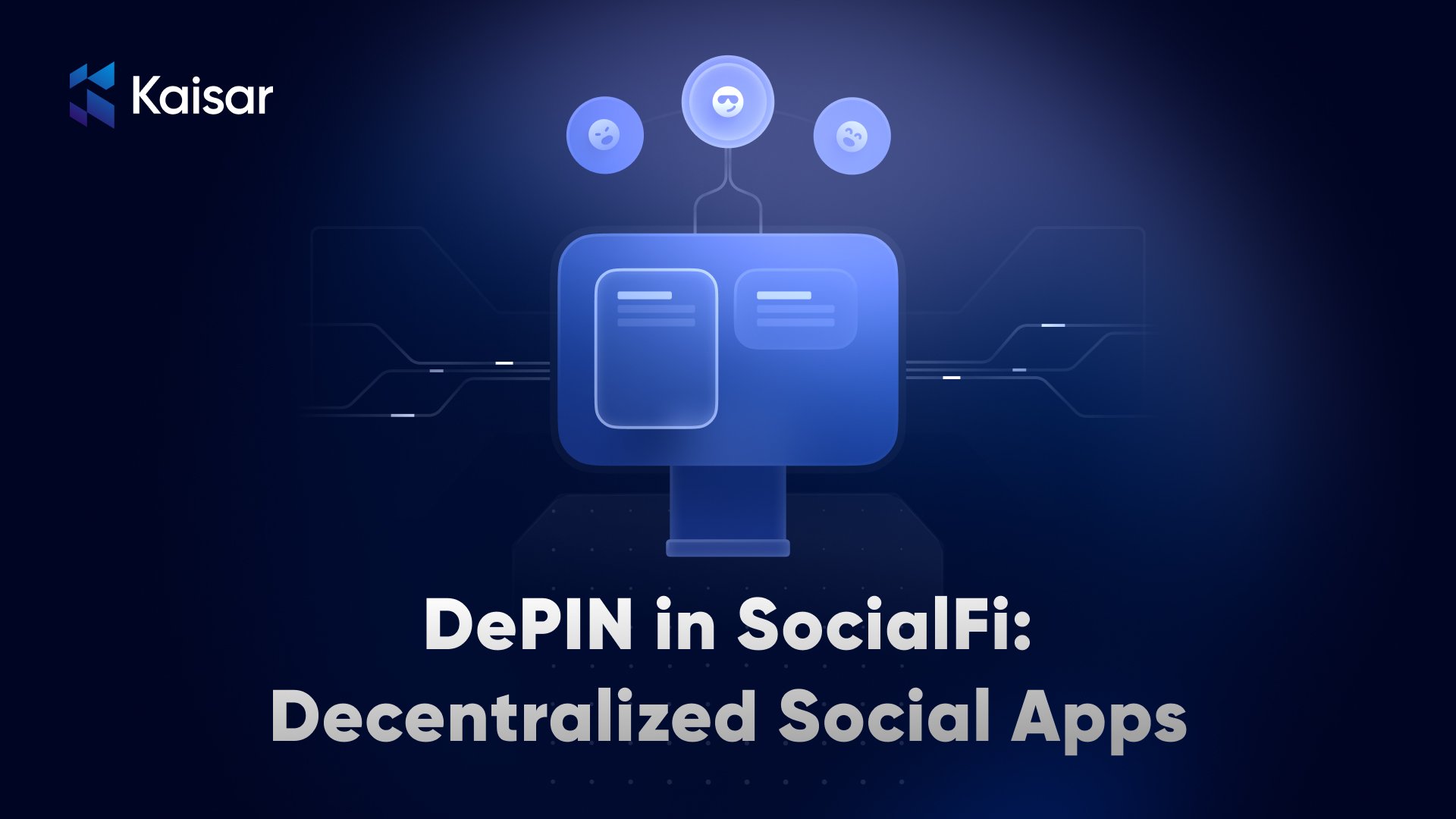In recent years social media has become dominated by various centralized platforms: Meta, X (formerly Twitter), TikTok, and others, which collect user data, set the control for their platforms, how users get paid (if at all), and even influence public dialogues.
While these platforms provide enormous reach and efficient user experience, they also present a number of problems, including issues of data privacy, censorship, algorithmic bias, and concerns around monetization disparities.
To address these growing concerns, we are now seeing a new wave of innovation happening at the intersection of DePIN (Decentralized Physical Infrastructure Networks) and SocialFi (Social Finance) beginning the age of decentralized social applications.
In this article we will explore how DePIN is impacting the SocialFi space, benefits it provides along with some notable projects currently in development.
What is DePIN?
DePIN refers to distributed, blockchain-coordinated networks of physical computing assets – in our case, GPUs, storage, bandwidth, and sensors, owned and operated by independent participants, who are rewarded for providing their computing assets.
Rather than utilizing centralized cloud providers or hosting services DePIN enables infrastructure to be scaled through project participants, which in turn provides reduced costs and resilience for users.
In the context of SocialFi, DePIN plays a central role of providing decentralized social applications, compute, bandwidth, and storage, while still retaining control of the application to users and the community.
What is SocialFi?
SocialFi (Social Finance) is a new category of Web3 applications that blends social media and decentralized finance. SocialFi applications allow a shift from traditional social media networks, to more equitable token-based ecosystems where content creators get a more equitable return on their contribution to the platform.
By utilizing DePIN protocols, SocialFi applications can function completely independently of any centralized infrastructure and be fully decentralized, censorship resistant, and community owned.
How DePIN powers Decentralized Social Apps
Decentralized storage
The largest dependency for any social platform is storage of data – text, media, posts, profiles, and metadata. Centralized providers such as AWS or Google Cloud are responsible for storing this information on their servers, controlling access to the information as well as its availability.
DePIN protocols provide decentralized storage with encryption, fragmentation and distribution of data across their network of nodes.
In a SocialFi application, users profiles, posts and media metadata are often stored on- chain .Thus eliminating any need for trust in any centralized service when it comes to posting, accessing and sharing content.
Decentralized compute
Social apps leverage machine learning models to moderate content, rank feeds, or utilize engagement analytics. DePIN powered decentralized compute protocols can provide scalable decentralized GPU and CPU resources that can execute neural networks and algorithms, while preserving the ability to still claim ownership of their data
Decentralized Networking
Bandwidth, content delivery, and real-time data streaming are foundational components of any social platform. DePIN can offer community and peer-supported wireless networks and mesh connectivity to provide efficient operating conditions for SocialFi apps especially in remote areas or regions with infrastructure constraints.
Benefits of DePIN based SocialFi platforms
True Ownership
SocialFi applications often issue creator tokens or NFTs for ownership over content, which can then be bought or sold. With DePIN, the underlying content remains decentralized and secure.
Censorship Resistant
In a DePIN social media content is served and stored across distributed nodes, a single authority could not delete or censor the data if they wanted to. This aspect is especially important for protecting free speech in countries with restricted information policies.
Community Governance
With a token-based governance model, users can vote on platform rules (the rules for content, moderation, feature development, and economic parameters) and allows these decisions to be executed transparently at the infrastructure level.
Cost Effective
DePIN models lessen dependency on expensive centralized servers, contributors are compensated in tokens for loaning their computing resources. This cost savings can be leveraged to benefit users and content creators, with better monetization options and affordable platform fees.
Better Transparency
DePIN-backed systems logs everything on-chain, from content creation, to moderation actions, to payments and anything else. There exists a public ledger that can create accountability in situations for dangerous behavior, or biased/extraction-algorithms on social media networks.
Conclusion
The future of social media is decentralized, transparent and user-owned. DePIN will continue to unify these visions to make them scalable, resilient and economically viable.
As AI, digital identity and decentralized storage become more prominent SocialFi platforms will start to become much more complex and powerful—creating better engagement models and giving direct power back to both content creators and communities.
Join Kaisar Network
Looking to launch or scale your decentralized application?
The Kaisar Network has the GPU containers, compute orchestration and infrastructure reliability in order to support the next generation of SocialFi and other applications.
Find out how the Kaisar Network can supercharge your app journey. Visit kaisar.io for further details.

